#iguanidae
Text
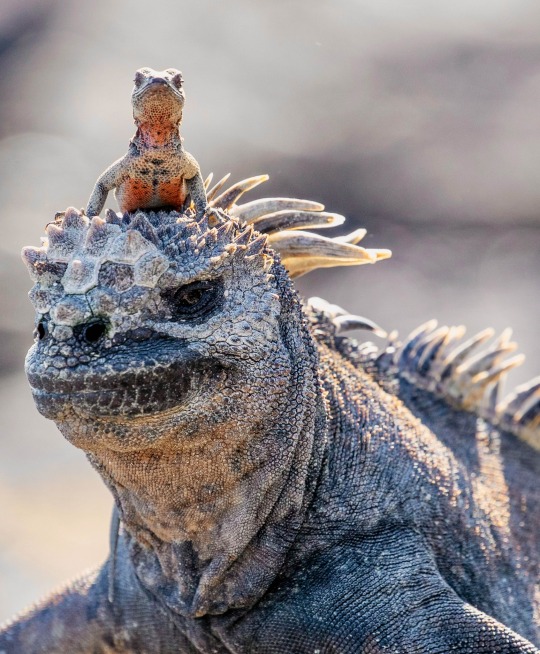

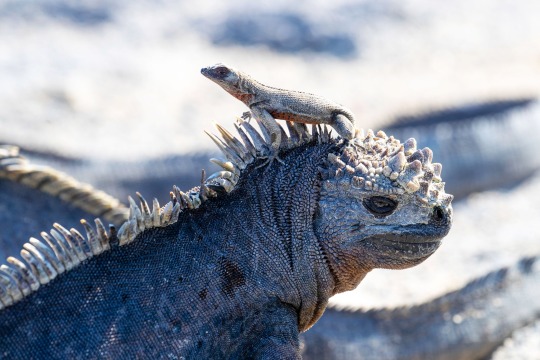
Galapagos Lava Lizard (Microlophus albemarlensis), family Tropiduridae, sitting on a Marine Iguana (Amblyrhynchus cristatus), family Iguanidae, Fernandina Island, Galapagos
photographs by Rachelle Mackintosh
#lava lizard#tropiduridae#microlophus#iguana#amblyrhynchus#iguanidae#lizard#reptile#herpetology#animals#nature#galapagos
6K notes
·
View notes
Text

The eye of an invasive green iguana (Iguana iguana) in Florida's Everglades National Park, USA
by Cath Dominguez
#green iguana#iguanas#lizards#reptiles#iguana iguana#iguana#iguanidae#squamata#reptilia#chordata#wildlife: florida#wildlife: usa#wildlife: north america#invasive species#details
109 notes
·
View notes
Text
Uncharismatic Fact of the Day
The term ‘iguana’, used for a variety of species in the Iguanidae family, is derieved from the word ‘iwana‘, from the Taíno language. It was incorporated first into Spanish, then into the wider scientific lexicon after the Spanish invasion of the Caribbean islands.

(Image: A common species, the Central American horned iguana (Iguana rhinolopha) by Matthew Morton)
If you like what I do, consider leaving a tip or buying me a kofi!
41 notes
·
View notes
Text
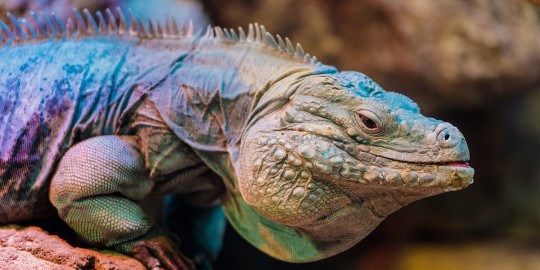


Grand Cayman blue iguana
Grand Cayman blue iguanas — also called blue iguanas, Cayman Island blue iguanas or Grand Cayman iguanas — are large, heavy-bodied lizards with colors ranging from gray to bright blue. These ground-dwelling reptiles are diurnal and will bask in the sun to warm up at the start of the day. They can be a territorial species, especially with iguanas of the same sex.
5 notes
·
View notes
Photo

Iguana by Mary Torres E. https://flic.kr/p/2o14uBb
2 notes
·
View notes
Text




Black iguana (Ctenosaura similis)
TK
#iicraft505#animals#chordata#reptiles#squamates#iguana#iguanidae#iguania#black iguana#black spiny-tailed iguana
0 notes
Photo

Man kann nie genug Leguane posten. . #costarica #costarica🇨🇷 #uvitacostarica #leguan #iguana #lizard #reptile #tierfotografie #animalphotography #reptilien #fernwehfamily #echse #iguanidae #lepidosauria #drachen #dragon (hier: Osa Costa Rica) https://www.instagram.com/p/CoAcroBshj_/?igshid=NGJjMDIxMWI=
#costarica#costarica🇨🇷#uvitacostarica#leguan#iguana#lizard#reptile#tierfotografie#animalphotography#reptilien#fernwehfamily#echse#iguanidae#lepidosauria#drachen#dragon
0 notes
Text
lizard mating rituals are funny as hell especially anoles like why tf are you doing push ups
#she wants you bro i promise 💪🏽😮💨#iguanidae and the lower classifications that are related to them are the chads of lizard world#*fizzyspeaks
5 notes
·
View notes
Text
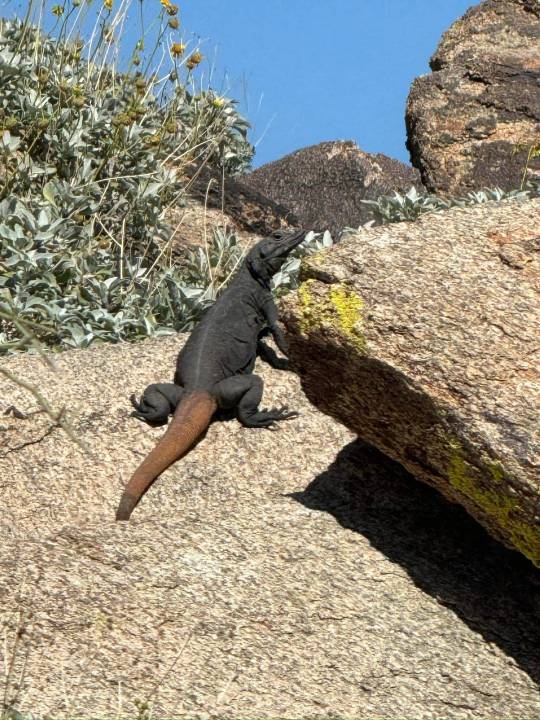
photo: Jesse Rios
is this
Sauromalus ater, also known as the common chuckwalla or northern chuckwalla, is a species of lizard in the family Iguanidae. It inhabits the Sonoran and Mojave Deserts of the Southwestern United States and northwestern Mexico. Wikipedia
29 notes
·
View notes
Note

treat for lizard anon!!
This is a green iguana :)
Scientific classification (copied from wikipedia):
Domain: Eukaryota
Kingdom: Animalia
Phylum: Chordata
Class: Reptilia
Order: Squamata
Suborder: Iguania
Family: Iguanidae
Genus: Iguana
Species: I. iguana
🫶
19 notes
·
View notes
Text
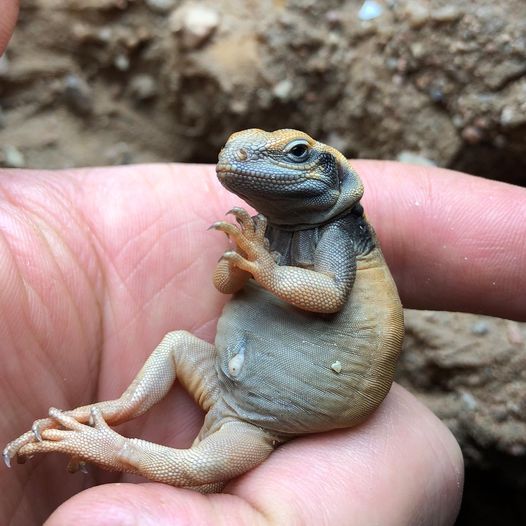
Chuckwalla (Sauromalus ater) hatchling, family Iguanidae, found in the southwestern U.S. and NW Mexico
photograph by Innovative Ectotherms
4K notes
·
View notes
Photo
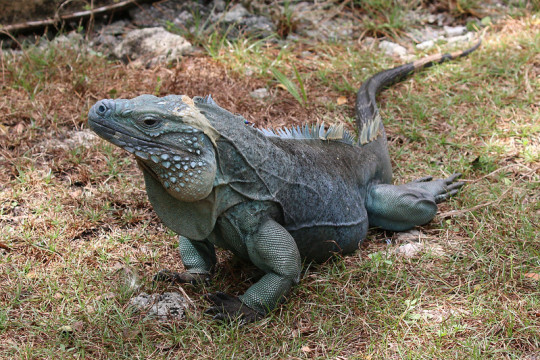
A blue iguana (Cyclura lewisi) in Grand Cayman, Cayman Islands
by Charles Sharp
#blue iguana#iguanas#lizards#reptiles#cyclura lewisi#cyclura#iguanidae#squamata#reptilia#chordata#wildlife: cayman islands
154 notes
·
View notes
Text
Conoce la iguana marina, la única especie de lagarto marino que existe en la Tierra.
3 notes
·
View notes
Note
Please and thank you: tell me something about the desert, I’ve never met one, but would like to. Something big or small, just something lovely?
in the sonoran desert, when it rains during the monsoon, the desert petrichor mingles with the exudates of the creosote/chaparral and makes the most incredible scent. i smelled in when i visited in 2021 and it made me cry instantly
in phoenix, the introduced mediterranean gecko (Hemidactylus turcicus) has become incredibly common, and most of my childhood lizard memories are either of encounters with them, or with the tree lizard (Urosaurus ornatus). the geckos are really hidey and stay in the shadows and come out at night (you'll see them a lot around lamps eating the attracted insects), but the tree lizards are showy, and they love to dash around on cinderblock walls and soak up the sun, and do pushups at other tree lizards (males have a bright blue patch on their throat). until recently tree lizards were classified as part of a larger Iguanidae family, but were recently re-classified into the Phrynosomatidae family, which also includes the horned lizards* and spiny lizards, and you can see the relation between them in the shape of the top of their skull around the parietal eye. also i just found out that the oldest known member of this family, excavated in Mongolia, has been named Desertiguana, not to be confused with the desert iguana (Dipsosaurus dorsalis) which is found in the sonoran desert (& bordering deserts)
another incredible thing about the desert are tadpole shrimp (Triops) and spadefoot toads (genus Spea and Scaphiopus). during the monsoon these'll pop out of the dust and spend the next week or so fucking in the very temporary pools, and lay their eggs. the shrimp eggs will not hatch (and iirc need to be dried out before they will hatch) and will settle into swiftly drying mud. the spadefeet eggs will hatch and then mature incredibly swiftly, and the little toads will dig into the drying dirt and cover themselves with a membrane that will keep them moist until the next rains come.
also the sonoran desert at sunrise is just incredible, visually, and also aurally. all of the many many species of bird found in the desert sending out their symphonic cacophany into the morning. warbling cactus wren, whistling thrasher's and creaking grackles and the little cheep of the verdin (a little green-grey bird with a bright yellow head that's often found on the palo verde, which has green bark and bright yellow flowers). in some areas you might see gila woodpeckers nesting in holes in saguaros, and in the phoenix area a population of introduced peach-faced lovebirds has become established, and occupy seemingly a niche that nothing else was in, and sometimes you might see them amongst the cactopodes also.
*these fuckers eat ants and are so specialized in eating ants that they have a compound in their blood to neutralize formic acid and if they don't eat enough ants that need neutralized the compound builds up and poisons them. also some species can shoot blood out of their eyes. please don't make them do this
8 notes
·
View notes
Text
Mudwings: Gruidae
Rainwings: Callitrichidae
Icewings: Cervidae
Skywings: Falconidae
Sandwings: Iguanidae
Nightwings: Megadermatidae
Seawings: Cheloniidae
#design notes#of course dragon elements will be added i just need to know what animals i am gonna base them all off of
1 note
·
View note
Text
Incredible Animals: A Glimpse into the Fascinating World of 'I' Creatures
When it comes to the diverse world of fauna, the letter 'I' might not be the first letter that comes to mind. However, there are several intriguing animals that fall under this category. From the icy Arctic to the lush rainforests, 'I' animals exhibit a wide range of behaviors and adaptations. In this article, we'll explore some of the most animals that start with i.
1. Iguana
The iguana is a reptile that belongs to the family Iguanidae. These creatures are known for their distinctive appearance, with elongated bodies, powerful tails, and a dorsal crest of spines. Iguanas are primarily found in Central and South America, where they inhabit a variety of environments, from tropical rainforests to arid deserts. These herbivores play a crucial role in their ecosystems by controlling plant growth and acting as prey for larger predators.
2. Impala
The impala is an elegant antelope species native to Africa. These slender, medium-sized herbivores are renowned for their exceptional speed and agility, making them a common sight in the savannas and grasslands of the continent. The impala's striking reddish-brown coat and distinct black markings contribute to its distinctive appearance. These social animals are often seen in large herds, providing them with safety in numbers from predators.
3. Indian Elephant
The Indian elephant (Elephas maximus indicus) is one of the largest land mammals on Earth. These gentle giants are found in various parts of South Asia, including India, Sri Lanka, and Nepal. Known for their intelligence and strong social bonds, Indian elephants are an integral part of the cultural and ecological landscape of the region. Unfortunately, they face threats from habitat loss and poaching, making conservation efforts critical for their survival.
4. Ibex
The ibex is a rugged, sure-footed mountain-dwelling ungulate known for its impressive curved horns. There are several species of ibex found across Asia, Europe, and Africa, each adapted to their specific high-altitude habitats. These solitary creatures are often found in steep, rocky terrain, where their climbing abilities allow them to access food sources that would be inaccessible to other animals.
0 notes